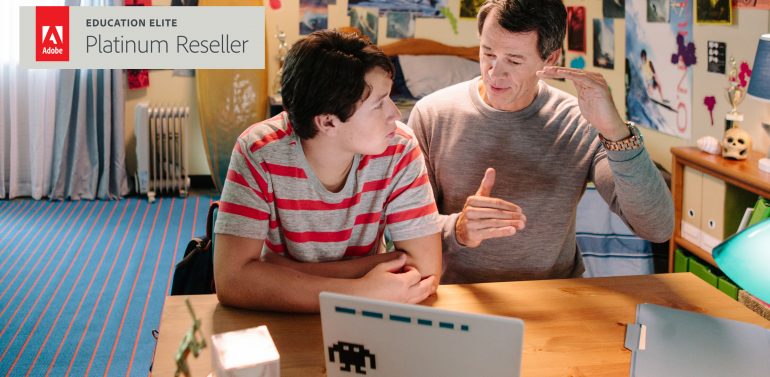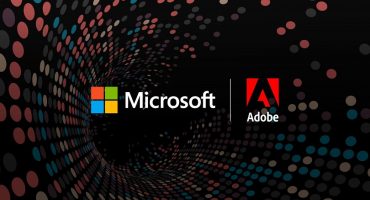
Adobe: Breaking Down Barriers with Blended Learning
Last updated: 28th August 2020
Author: Mark Price, Pugh Computers Ltd, Technology Strategist for Modern Workplace
What is blended learning?
With many students recently learning from home and with the new school year on the horizon, we have started to see this phrase appear more and more – blended learning. But what exactly does this mean?
The concept of blended learning isn’t actually that new. In fact, it has been around for many years with the earliest formal use of the term dating back to 1999! However, it is only with the advances of today’s modern technology that the learning approach is truly starting to be taken seriously.
Blended learning is simply a mixture of classroom-based learning and remote learning (typically at home using a computing device). Where today’s advanced technology really makes a difference is by making the transition between the classroom and home environments seamless, i.e. they are blended.
Why adopt a blended learning approach?
While remote learning may have been an effective quick fix during the recent pandemic, it has helped develop the concept of modern blended learning. This looks to be a setup that many schools will adopt over the coming months, allowing students and teachers to safely return to the classroom in a controlled manner with students alternating between the classroom and home learning.
Blended learning is also evolving into a long-term vision for education. The approach is inclusive, bringing enhanced opportunities for students who struggle to adapt to classroom learning, perhaps due to disabilities. Blended learning gives them the opportunity to collaborate with classroom-based students, with modern technology such as interactive touchscreens and cameras blending the different environments.
Blended learning also allows teachers to split their time between several different sites within a single day, with no travelling required. By making teaching resources more accessible to all schools, students can benefit from specialist teaching that may otherwise have been unavailable to the school.
How do Adobe enable blended learning?
Where device licenses are tied to specific devices, if those devices become inaccessible, as has been the case recently with students unable to access classrooms and labs, those licenses become redundant.
Adobe’s Named User Licensing model provides a solution to this problem. Instead of devices, Named User Licenses cover specific users, meaning users can access Adobe tools and stay creative and productive from anywhere, at any time, on any device. With one simple login, teachers and students can transition seamlessly between home and classroom environments and keep access to all their work, making it a valuable tool in successfully enabling blended learning.
Pugh recently worked with Adobe in hosting a webinar to bring you valuable insights into how Adobe’s Named User Licenses can play a big part in creating a successful blended learning environment. Head over to Pugh’s YouTube channel here to check out the recording as well as other great content!
Leave a Reply
Events Calendar
Wed
09
Webinar: Monthly Microsoft Campus Updates – April 2025
Apr 09 @ 11:00 - Apr 09 @ 11:30
More informationWed
14
Tue
20

Adobe & Microsoft: Creativity meets Productivity
Last updated:24th May 2020
Adobe and Microsoft are two of the biggest names in technology. If you use any sort of computing device, the chances are that you use at least some of their tools, whether it’s exploring your creativity with Adobe Photoshop or Illustrator, or getting productive with Microsoft Word, Excel or PowerPoint. And let’s not forget Adobe Acrobat; how would we cope without this staple PDF tool?
Read more »

 sales@pugh.co.uk
sales@pugh.co.uk 01974 200 201
01974 200 201

